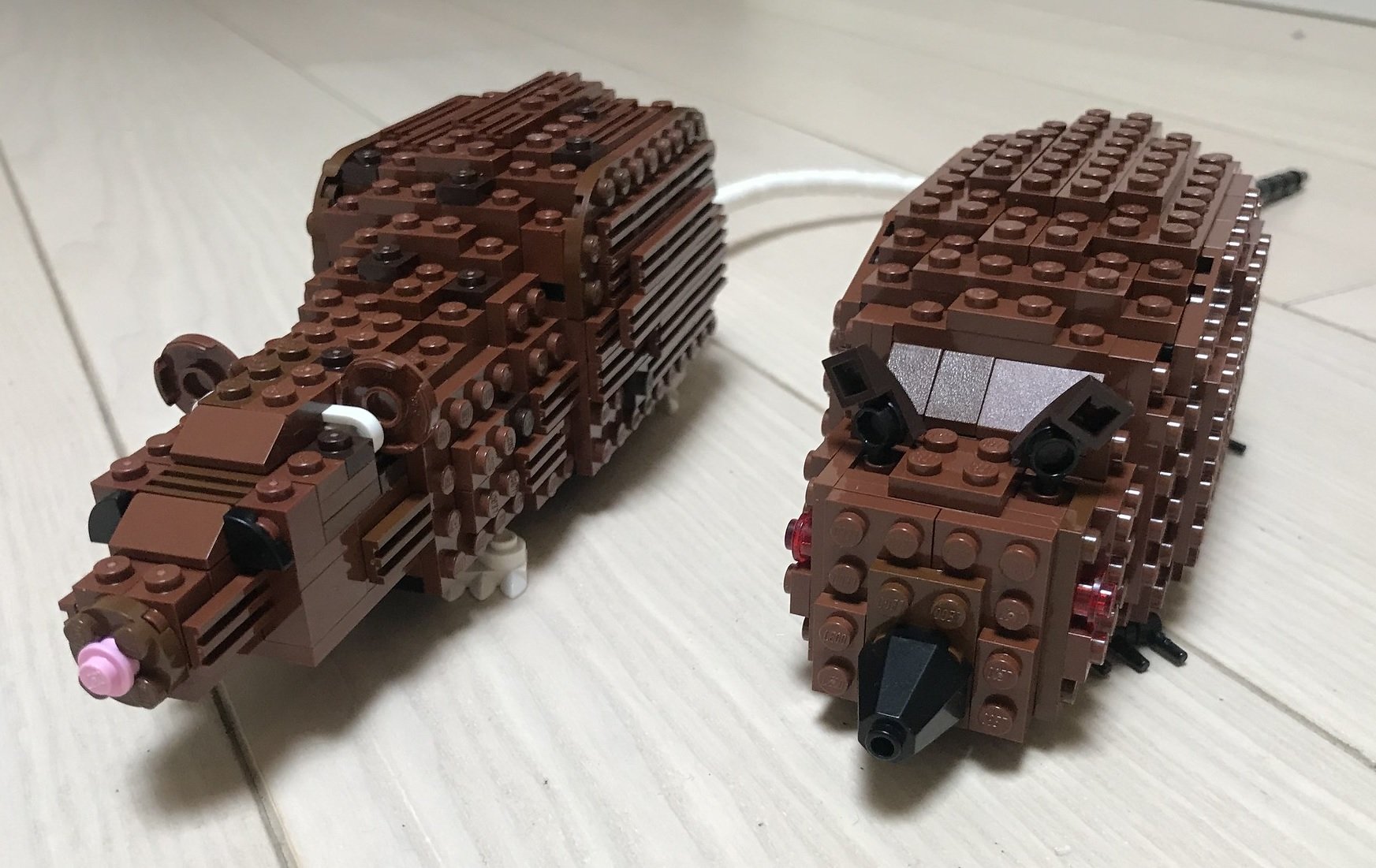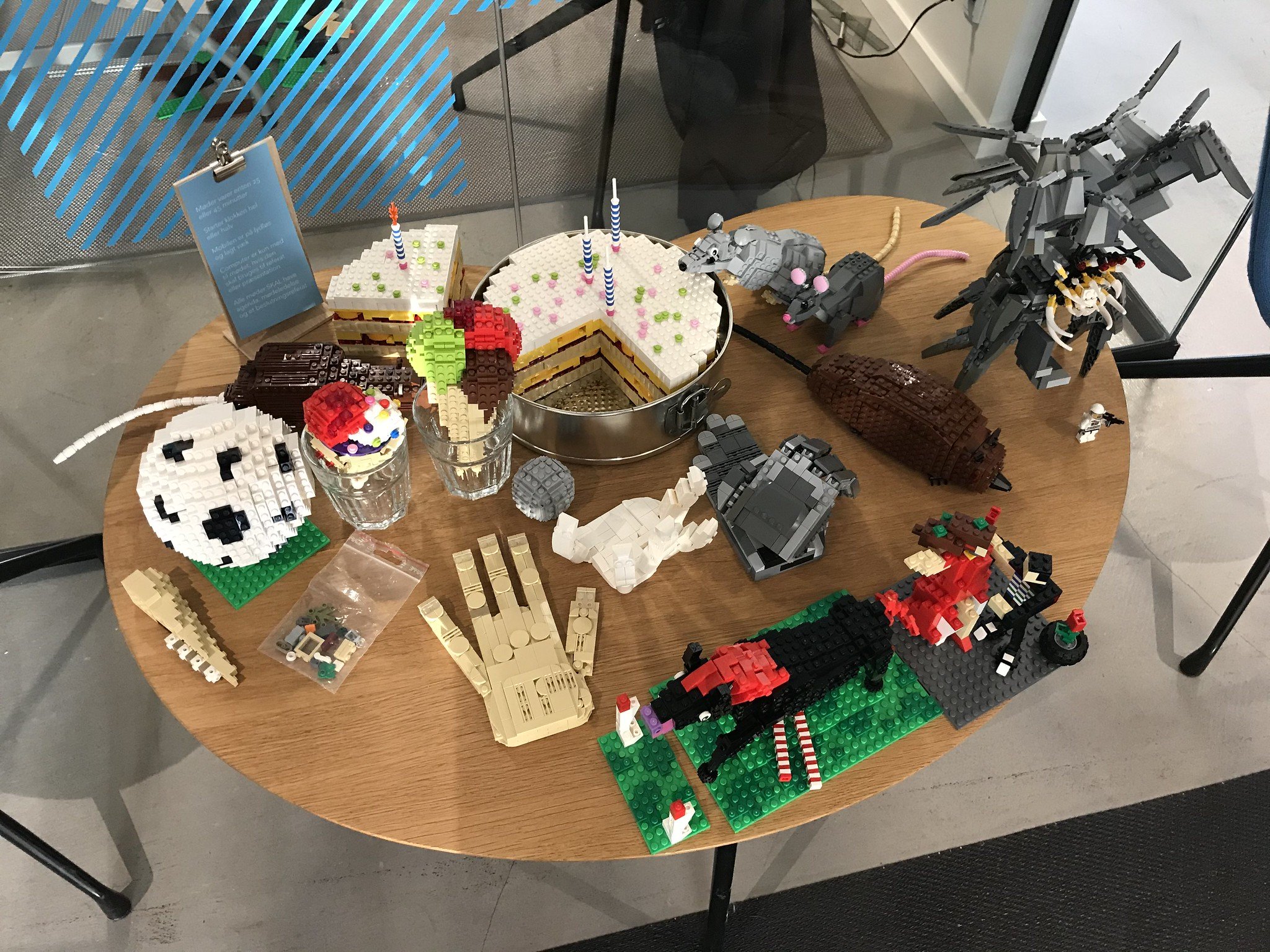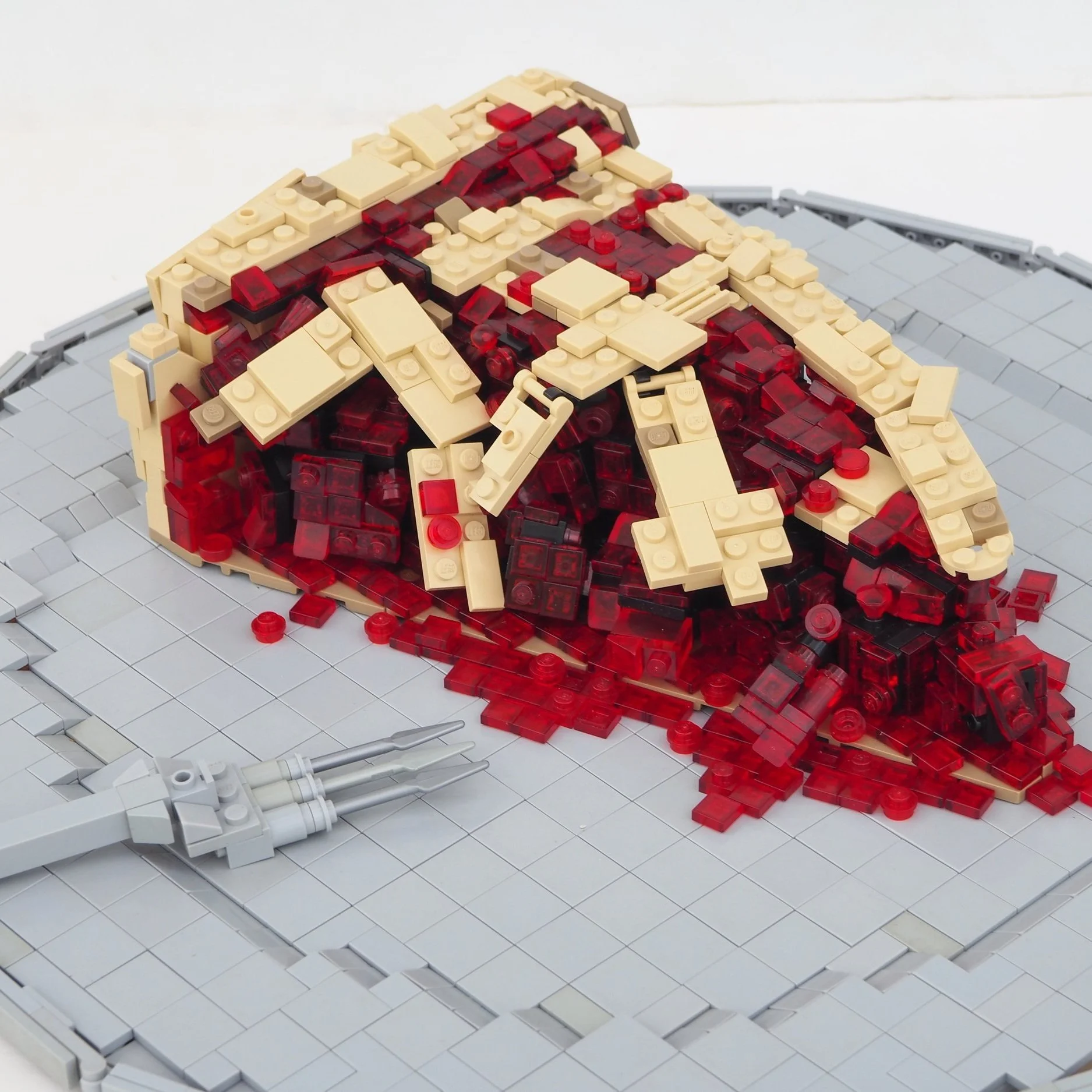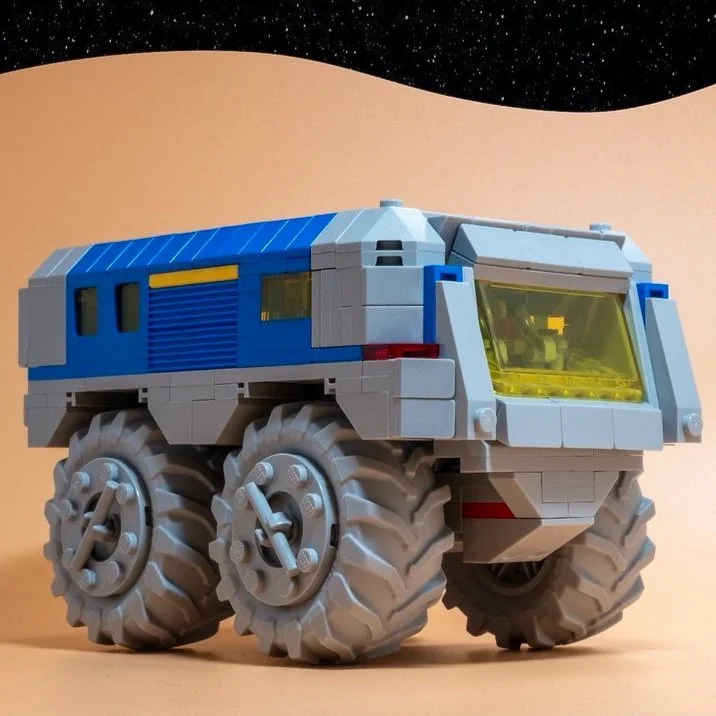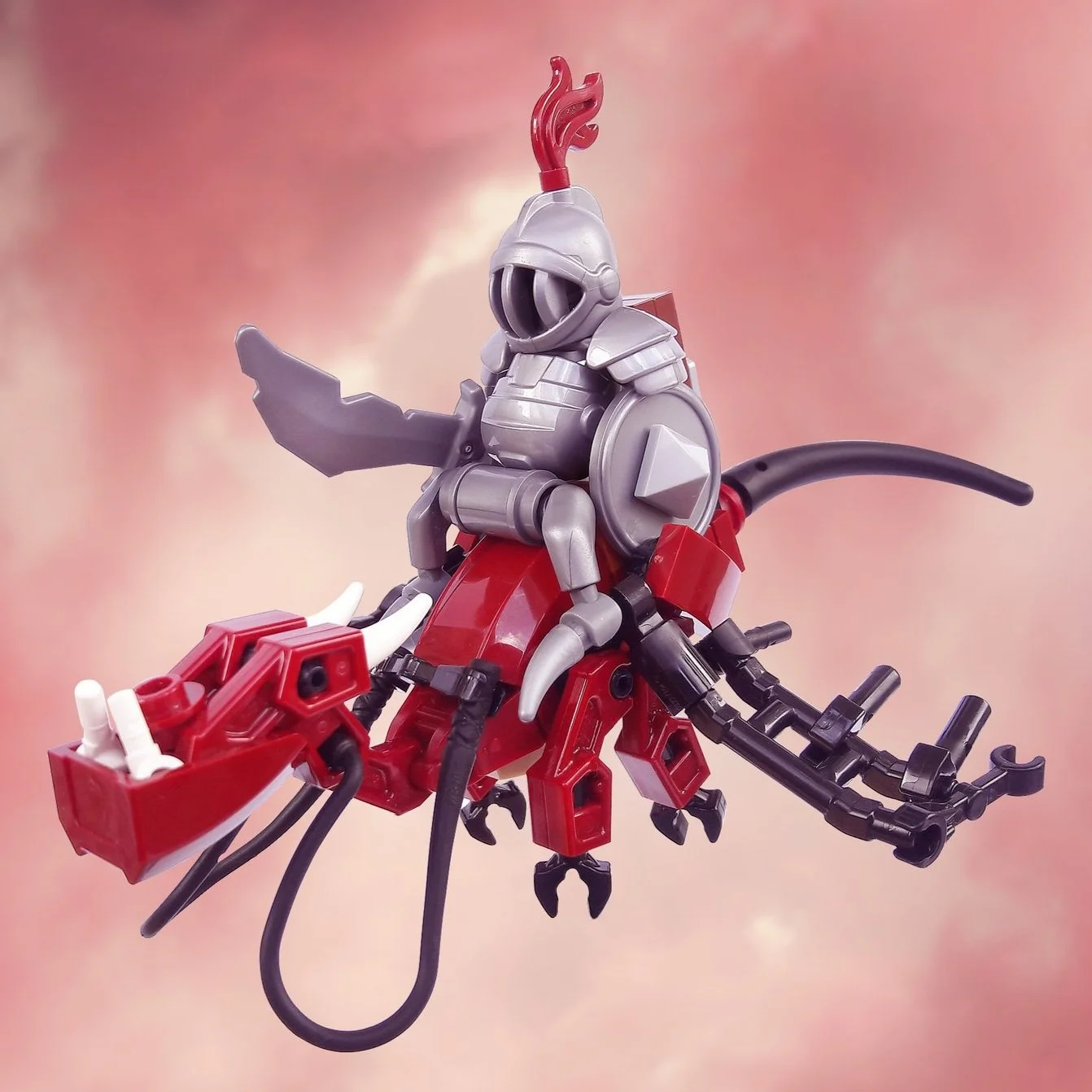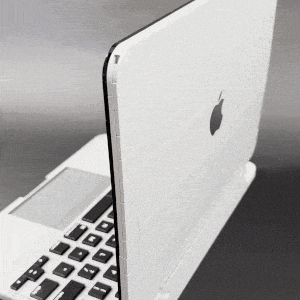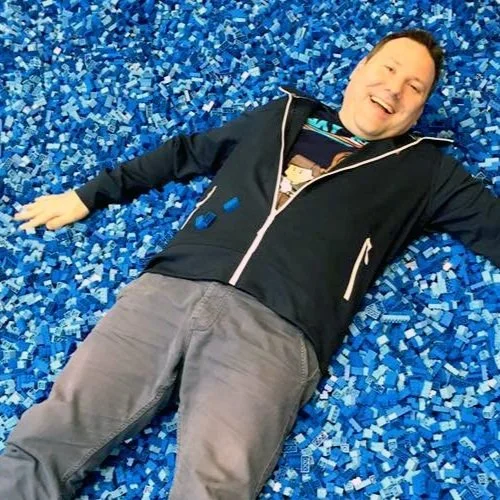Preparing for LEGO Masters Denmark: Casting and Challenges
/Today’s guest article comes from Esben Kolind who competed on LEGO Masters Denmark. In a short series, he will share his experiences as an AFOL on the show from casting to filming and everything in-between.
Making Contact
In the summer of 2019, almost two years before Danish LEGO Masters (LM) would eventually air, I was contacted by a casting agent from the TV production company owning the rights to produce the show in Denmark. She came across my name during her initial research of the Danish AFOL community, and - as fate would have it - she had cast me as a contestant on "Jeopardy!" more than fifteen years earlier! We met for a long chat about the TV format and the Danish LEGO scene.
With a population of 5.8 million, Denmark is a small country. Although it is the motherland of our beloved brick, the AFOL scene is not as large as one might think with only one major LUG and a few local communities. I had seen short online videos of the impressive models from the first season of LM in Australia, and while I could name a dozen Danish builders on that same level, would they want to participate? Would they want to be on camera, building something unfamiliar, under time pressure? And would they have the opportunity (or desire) to spend two months on the project? In many ways, LEGO Masters is the exact opposite of how you normally build with LEGO bricks!
I gave the casting agent a list of skilled builders. I know she contacted most of them, and a few of them later ended up on the show. She was also looking to find a diverse cast and did not want 16 male contestants all in their 30s or 40s. Although LM is a building competition, it is primarily a primetime family entertainment format where casting is very important.
Finding a Teammate
When COVID-19 hit in early 2020, I forgot all about the LEGO Masters conversation until September 2020 when a message from the casting agent hit my inbox: “LEGO Masters is happening! Apply now!” I actually briefly considered not applying. My LEGO hobby has never been a secret, but did I really want to reveal my inner child in front of everyone in Denmark?
It was, however, an easy decision. I'm a life-long LEGO fan without a dark age. I displayed my first MOCs online on LUGNET in the late 90s and have exhibited large layouts at conventions for over a decade. This was an opportunity I just couldn’t pass up. Incidentally, very little was happening at my job in Copenhagen Airport at the time (due to COVID-19) so I was able to take time off if I was selected.
The team – Lasse and Esben
I knew exactly who I wanted as my teammate. I consider Lasse Deleuran to be the best and most versatile builder in Denmark, having produced a vast number of high-quality MOCs throughout the years. We had met and talked a few times at conventions and competed in MOC competitions and speed-building challenges (he is also incredibly fast!). We had never actually built anything together, but I had a feeling that we had the same standards and ambitions and would make a great team. I was thrilled when Lasse sent a positive response to my invitation.
Preparing for Casting
Our joint application with pictures from our MOC portfolios was well received, and we were invited for a casting session. As we are both highly competitive, our shared goal was clear from the beginning: we wanted to win LEGO Masters.
First, we had to prepare for casting, however, we faced one slight problem. At the time, Lasse lived in Southern Germany while I lived in Copenhagen. Not being able to meet in person, we would send each other weekly building challenges. We focused the challenges on building out of our comfort zone, building organic models and with a tight time constraint.
We tasked ourselves with a range of challenges: Build a space monster in two hours. Build a 1:1 layer cake with a cut-away piece in two hours. Build a 1:1 ice cream cone in 90 minutes. Build your left hand in one hour, then build your right hand with a different technique in the next hour.
The Rat and the Mole
The picture above shows my solution to one of the challenges proposed by Lasse: build a life-size rat in one hour without looking at reference pictures. Then look at reference pictures and build one more rat in an hour. Almost all of my MOCs have been modelled after real buildings, trains, or cars, so it was actually pretty hard to not have a reference when building.
I was quite happy with the result of my first attempt but then I Googled “rat” and realised that my model did not look like a rat at all… it looked more like a mole! The overall proportions, the size of the head, the position of the eyes… all wrong. I found it a lot easier to build the second version from a reference picture, and I even had time to experiment with colour variations and grill tiles for the fur. The challenge was a good LM lesson. If at all possible, I would prefer to build fantasy creatures instead of real-life animals, unless I had a very strong recollection of the specific animal or frequent access to reference pictures. It would be easy for the judge on the show to dismiss a model of an animal if the proportions or colours were off.
Casting Day
I suggested to Lasse that we bring the preparation models we built to casting day. Bringing our models would demonstrate our dedication and serious approach to the competition.
We were the only team to bring models to the casting, and while I have promised not to reveal the casting procedure, if you can imagine that it includes several creative building challenges with a time limit and a limited selection of bricks… you wouldn’t be all wrong. I do believe that the experience from our weekly challenges served us well. Throughout the day, the casting team with members from the production company, Danish national TV, LEGO, and the Danish LCP (LEGO Certified Professional) would visit us several times to discuss our builds, ideas, and approach, which also gave us an opportunity to present our preparation models. To be honest, I don’t know whether bringing the models had any impact on us being selected for the show.
As anticipated, it proved difficult to get enough qualified builders to audition for the show, and the casting agent had to do several additional calls for applications in LUG forums and Facebook groups, especially for more female builders. She also reached out directly to many builders posting MOCs online.
In the end, Lasse and I were selected to be on the show, along with fourteen other wonderful and talented contestants. I was pleasantly surprised to discover that I had never come across half of the group of contestants in the Danish AFOL community.
Preparing For The Show's Challenges
With our participation secured, preparations entered a new phase. With about a month to go before the start of filming, we started watching episodes from the international versions of LEGO Masters and took notes. Lasse had access to the first season of the US version, while I would watch Season 1 and 2 from Australia as well as the Swedish version, which was being broadcast at the time. Lasse created a shared online Google Docs file named “LEGO Masters Cheat Sheet”, which would eventually grow to be 73 pages of reference pictures and notes taken both during our preparations and during the actual recording period.
For each challenge, we wrote a list of “dos” and “don’ts” based on our observations. Here are a few of the tips and tricks we discovered for each challenge:
Mega City: Build BIG, don’t spend too much time on the lower floors, avoid large windows on empty floors, don’t rely only on minifigs to tell the story, add movement, and don’t build in black.
Explosion: Don’t build too solid… but not too fragile either! It must look awesome when it explodes.
Bridge Challenge: Lasse simply put “Recreate the bridge that Mark and Boone built.”
Villains Lair: Can be a diorama with two walls and a back side – don’t hide the action behind walls.
Time Travel: Don’t challenge the theme and the scale… and don’t build a large grey castle.
Tower: Build two towers and put one on top of the other. Maybe build a telescope mechanism?
Hanging Brick: Build a hanging mechanism that allows the model to be built on the table. Think about ways to adjust the final balance of the model.
3D Art: Use forced perspective (foreground, background). Items must come out far from the frame and around the sides.
We took similar notes for all the other challenges we watched. Next, we discussed what challenges we thought were most likely to appear in the Danish version and drafted ideas.
We were both confident that the first episode would include the Mega City challenge. We therefore tasked each other to build the highest possible tower on a 32x32 baseplate in four hours (no breaks), using different facades for each floor. The idea was to test our speed and find possible facade solutions that were both good-looking and fast to build. (We also experimented with facades that could snap onto a Technic core.) The picture below shows my tower with twelve floors (around 1 meter tall) and limited internal reinforcement. I was very tired after building as fast as I could for four hours straight!
We never got the Mega City challenge, however, and I am glad, as my idea was neither very clear nor very original. Much to our disappointment, we didn’t get the Bridge Challenge on the show either, but the Tower challenge was used as a warm-up—and our preparations definitely paid off. We knew exactly how we wanted to construct the tower. We came in second place, some 30 centimetres shy of the winning tower.
Other anticipated challenges included: Explosion, Time Travel and Cut in Half. We prepared long lists of ideas, but none of these challenges were part of the season.
The Swedish season included a challenge where the contestants built creations based on children’s books by the famous Swedish writer Astrid Lindgren. A similar challenge with our famous fairy tale writer Hans Christian Andersen would be an obvious choice, so we listed his most famous stories (there are many!) and prepared ideas for a lot of them. For the Ugly Duckling, I envisioned building a life-sized grey duckling that could transform into a beautiful white swan by rotating the wings. With different colours on either side of the wing, the mechanism would unfold another neck and head from the body, etc.
Sure enough, the H.C. Andersen challenge was the first elimination challenge, but the fairy tales were selected at random. In hindsight, this was a lucky twist of fate. The “Duck Transformer” would have been too ambitious with a high probability of turning into a disaster. We decided on a much safer, traditional scene for our story “The Steadfast Tin Soldier” which gave us our first win of the season.
Our meticulous preparations really paid off in episode six, with the hanging brick challenge. Lasse badly wanted to build a giant dragon (in fact, a wyvern) and he invented the Modular Dragon Platform (MDP) for the occasion: a rack of modules built from Technic bricks allowed us to easily extend the body if needed. The wings, neck, and tail could be clipped on and off and finally adjusted to give the wyvern the perfect balance and position. In that way, we could build the individual parts independently on the table, assemble them, and only very late in the challenge mount the completed model on the hanging brick. This was a huge advantage, while some of the other teams struggled with building the model up in the air and correcting the balance in the end. The wyvern secured us another episode victory.
In what other ways did Esben and Lasse prepare for the show? All will be revealed in part two, now available!
How would you prepare for being on LEGO Masters? Let us know in the comments below!
Do you want to help BrickNerd continue publishing articles like this one? Become a top patron like Charlie Stephens, Marc & Liz Puleo, Paige Mueller, Rob Klingberg from Brickstuff, John & Joshua Hanlon from Beyond the Brick, Megan Lum, and Andy Price to show your support, get early access, exclusive swag and more.


